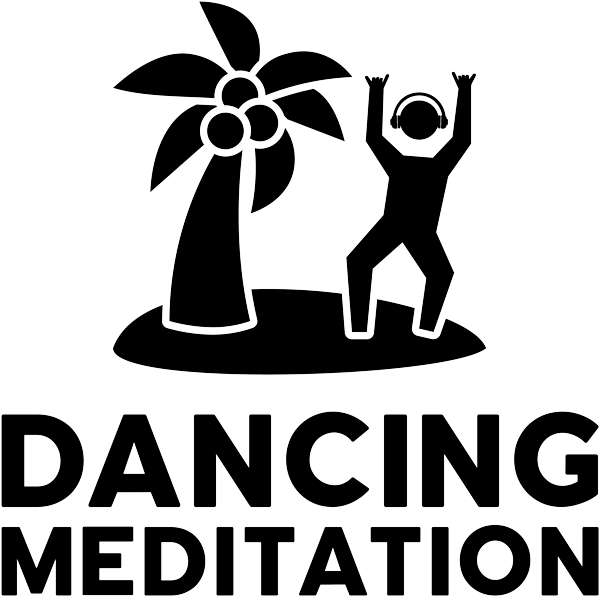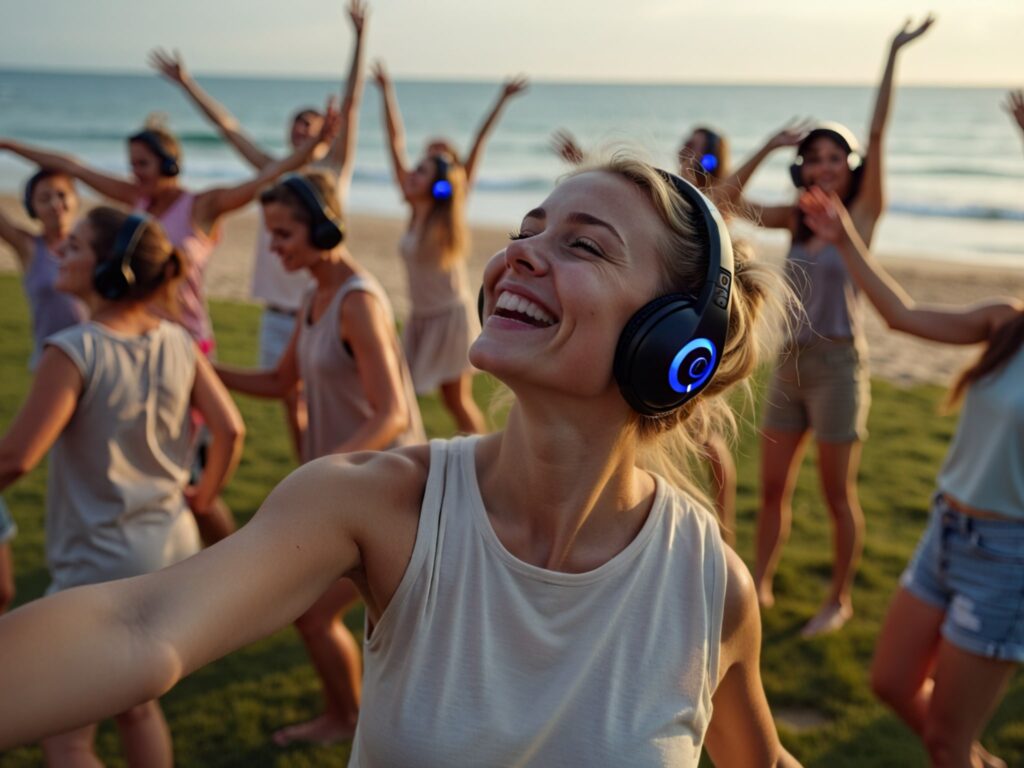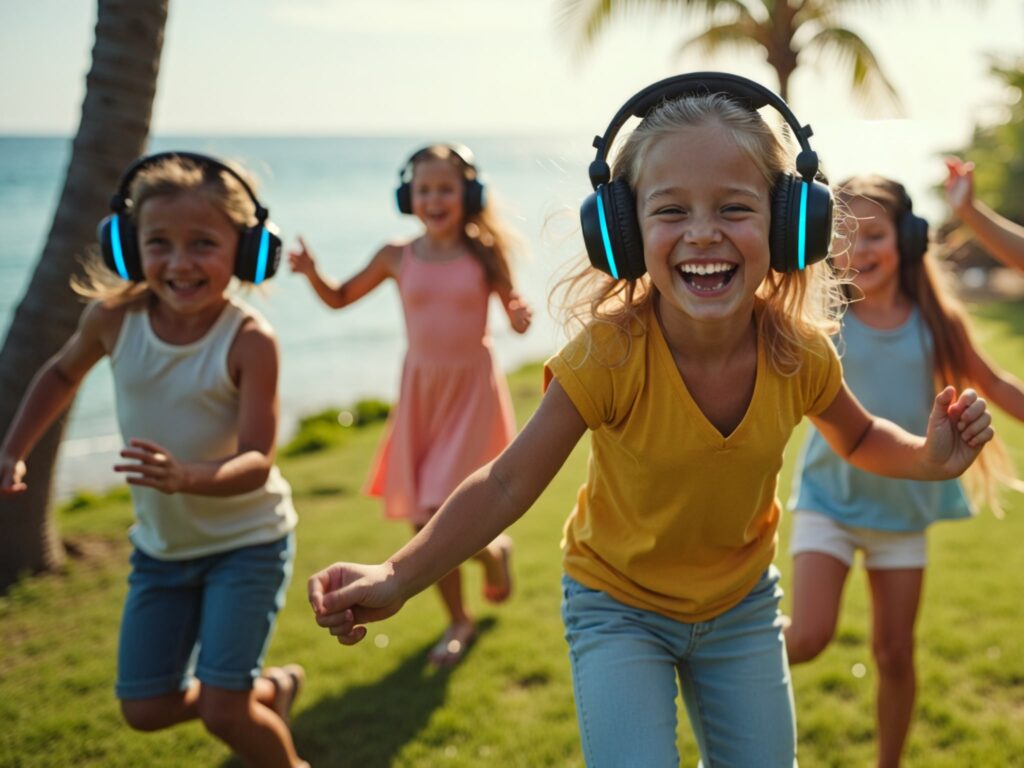Connecting with Nature Through Movement
Connecting with Nature Through Movement
Discover how combining dance and nature immersion can reduce stress, boost creativity, and spark holistic well-being. Explore the science and practical tips for Dancing Meditation.
Introduction: Moving in Harmony with Nature
In a fast-paced, digital world, many people crave an authentic way to reconnect with themselves and the natural environment. Dancing Meditation (DM)—a silent-disco style movement experience—offers just that. By blending free-form dance with nature immersion, it provides a powerful pathway to reduce stress, nurture creativity, and elevate overall well-being.
Imagine leaving behind the screens and to-do lists, stepping onto a beach or lush lawn, and feeling instantly lighter as music guides your movements. Dancing Meditation is a refreshing antidote to the stress of modern life—fun, uplifting, and deeply restorative.
Below, we explore the science and real-world benefits behind this nature-centered, movement-based practice.
The Power of Nature-Based Movement
Ever wondered why you feel instantly relaxed during a beach vacation or a walk in the woods? Nature holds transformative power, especially when combined with gentle, mindful movements.
1.1 Nature’s Calming Effect
Numerous studies confirm that spending time in green environments—parks, forests, beaches—can lower blood pressure, reduce cortisol (the stress hormone), and foster mental clarity (White et al. 2019). When you add gentle to moderate physical activity, those effects become even more pronounced.
Key Insight: Instead of treadmill workouts surrounded by screens, dancing on an oceanfront lawn or lush garden engages all your senses—ocean breezes, fresh air, the scent of greenery—making movement more joyful and grounding.
Picture yourself barefoot on soft grass, ocean breeze on your skin, feeling utterly free. This natural, sensory-rich environment makes each movement enjoyable and healing.
1.2 Breaking Routine for Mindful Connection
Routine indoor fitness can feel monotonous. Moving outdoors challenges the brain in new ways: uneven ground for your feet to explore, natural light stimulating your circadian rhythm, and a dynamic soundscape of waves or rustling leaves. Nature-based movement fosters a sense of awe and gratitude, helping participants develop deeper mindfulness in each step or sway.
Why Dance? The Science of Moving to Music
2.1 Rhythmic Resonance & Emotional Uplift
Dance taps into our innate rhythm and synchronization instincts. Research from Koelsch (2014) shows that music activates reward pathways in the brain—reducing stress and boosting mood. Pairing this with physical movement amplifies emotional release, driving endorphin and dopamine production that leaves participants feeling refreshed and euphoric.
Have you noticed how your favorite song instantly boosts your mood? Dance amplifies this effect, creating powerful moments of joy and connection.
Quick Fact: A 2016 study (Tarr et al. 2016) highlighted how synchronized dance can enhance social bonding and increase pain tolerance, thanks to elevated endorphins—proving that dancing can have tangible psychological and physiological payoffs.
2.2 Free-Form vs. Choreographed
Unlike regimented dance classes, free-form dancing (such as Dancing Meditation) reduces performance pressure. By emphasizing self-expression over perfect steps, it liberates participants from self-consciousness, enabling them to be fully present and responsive to the environment. This sense of freedom often leads to improved emotional well-being (Koch et al. 2019).
Dancing Meditation: Merging Movement, Music, and Nature
3.1 Outdoor Silent-Disco Meets Mindfulness
Dancing Meditation weaves silent-disco headphones with outdoor immersion:
- Silent-Disco Technology: Each participant can switch between music channels, customizing their experience without disturbing others.
- Nature Immersion: Sessions often take place on beaches, lawns, or scenic gardens, where participants can roam while staying connected to the music and mindful guidance.
- Mindful Prompts: Instead of formal instructors, short voiceover prompts may encourage deeper awareness of one’s breath, body sensations, or emotional state—enhancing presence.
It’s like stepping into your own private concert where nature is the stage. You choose your soundtrack, let your worries fade, and become fully immersed in the moment.
3.2 Family-Inclusive & Social Bonding
Bringing children, friends, or fellow travelers along? Family-friendly movement in an open-air setting fosters bonding unlike typical adult-focused fitness or spa classes. Studies indicate that shared dance experiences can solidify social ties and cultivate empathy (Bond & Stinson, 2000). Outdoor movement specifically enhances group cohesion by synchronizing participants with the rhythms of both nature and each other.
Curious about the tangible ways Dancing Meditation improves your well-being? Let’s dive into the science-backed reasons why so many participants leave sessions happier and healthier.
Science-Backed Benefits of Nature-Immersed Dance
Stress Relief & Mood Elevation
- Evidence: Outdoor activity reduces cortisol, free-form movement boosts endorphins.
- Practical Outcome: Participants often finish sessions feeling lighter, calmer, and more optimistic.
Enhanced Creativity & Problem-Solving
- Evidence: A meta-analysis (Tang et al. 2007) indicates that mindfulness linked to movement can heighten creativity and adaptive thinking.
- Practical Outcome: Freed from routine indoor settings, participants’ minds can wander productively, unlocking new ideas or personal insights.
Physical Health Gains
- Evidence: Even moderate-intensity dance can improve cardiovascular fitness, flexibility, and overall motor control (Fong Yan et al. 2018).
- Practical Outcome: While it feels playful, you’re still burning calories and strengthening the body.
Boosted Social Connections
- Evidence: Dancing in a group fosters social bonding by activating communal endorphin release (Tarr et al. 2016). Outdoors, shared awe of natural beauty strengthens these ties further.
- Practical Outcome: Deeper connections with family, friends, or other participants.
Mindful Presence & Emotional Well-Being
- Evidence: Combining music, nature, and mindful prompts can reduce anxiety and foster emotional expression (Koch et al. 2019).
- Practical Outcome: Regular participants often report improved resilience, clarity, and emotional balance.
Imagine ending your day feeling genuinely at peace, clarity in your mind, and joy in your heart—that’s the transformative power of Dancing Meditation.
Going Beyond: Making Nature Dance Part of Your Lifestyle
Why stop at just one session? Here are ways to weave this joyful practice into your daily life.
- Sunrise Sessions: Start your morning with a brief free-form dance in your backyard or a nearby park—just 10 minutes can drastically shift your mood.
- Family Bonding: Swap a typical indoor family game night for an open-air dance in a safe outdoor space.
- Travel Routines: Vacationing at a resort with Dancing Meditation? Make it part of your daily itinerary to keep stress at bay while traveling.
Imagine how refreshing it would be to begin every vacation day by dancing in nature, setting a joyful tone for the rest of your trip.
Conclusion: Step into Nature, Step into Yourself
Connecting with nature through movement is more than a workout; it’s a holistic, rejuvenating way to engage your body, mind, and spirit. Whether you’re a seasoned dancer or an absolute beginner, stepping into the open air, slipping on silent-disco headphones, and letting the music move you can yield profound benefits—from reduced stress and enhanced creativity to stronger social bonds and deeper self-awareness.
So the next time you crave a breath of fresh air and a spark of joy, consider dancing under the sky—you might just discover a whole new rhythm of life.
References:
1. White, M. P., et al. (2019). Spending at least 120 minutes a week in nature is associated with good health and wellbeing. Scientific Reports, 9(1), 7730.
Verification: This study is widely cited and published in Scientific Reports, a reputable peer-reviewed journal. It examines the relationship between time spent in nature and self-reported health and wellbeing.
2. Koelsch, S. (2014). Brain correlates of music-evoked emotions. Nature Reviews Neuroscience, 15(3), 170–180.
This review article is published in Nature Reviews Neuroscience, a high-impact journal. It explores how music evokes emotions and the neural mechanisms involved.
Link: DOI: 10.1038/nrn3666
3. Tarr, B., Launay, J., & Dunbar, R. (2016). Silent Disco: dancing in synchrony leads to elevated pain thresholds and social closeness. Biology Letters, 12(1).
This study is published in Biology Letters, a peer-reviewed journal by the Royal Society. It investigates the effects of synchronized dancing on social bonding and pain tolerance.
4. Tang, Y. Y., Ma, Y., Wang, J., Fan, Y., & Posner, M. I. (2007). Short-term meditation training improves attention and self-regulation. PNAS, 104(43), 17152–17156.
This study is published in Proceedings of the National Academy of Sciences (PNAS), a prestigious peer-reviewed journal. It demonstrates the cognitive benefits of short-term meditation training.
5. Koch, S. C., et al. (2019). Effects of Dance Movement Therapy and Dance on Health-Related Psychological Outcomes: A Meta-Analysis. Frontiers in Psychology, 10, 1806.
This meta-analysis is published in Frontiers in Psychology, a reputable open-access journal. It reviews the psychological benefits of dance and dance movement therapy.
6. Fong Yan, A., et al. (2018). The Effectiveness of Dance Interventions on Physical Health Outcomes. Sports Medicine, 48(4), 933–951.
This review is published in Sports Medicine, a well-regarded peer-reviewed journal. It examines the physical health benefits of dance interventions.



